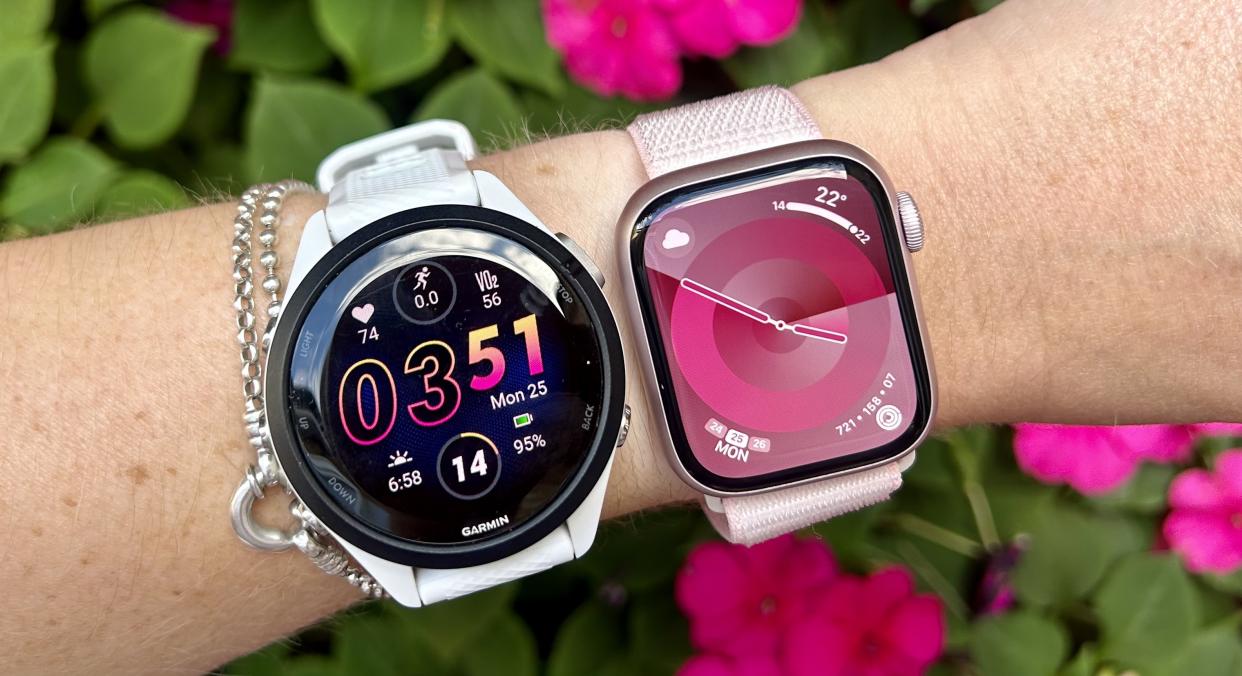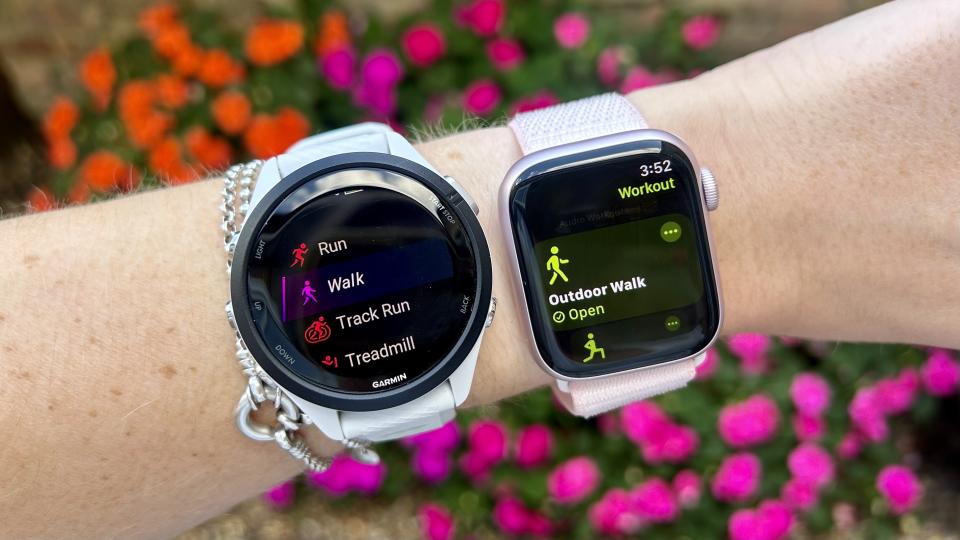I walked 8,000 steps with the Apple Watch 9 and the Garmin Forerunner 265 — here’s which was more accurate

These days, when you buy one of the best fitness trackers, it’s designed to do a lot more than just count your steps. Most of the best watches on the market have the capacity to track your sleep, heart rate, skin temperature, blood oxygen levels, and more.
But if you are looking to track your steps, you might be wondering whether the new Apple Watch Series 9 or the Garmin Forerunner 265 is more accurate. To find out more, I strapped both to my wrist and manually counted 8,000 steps, to find out which of the two watches was more accurate — read on to find out which watch won.
Before delving into my stats, let’s start by taking a look at how the best fitness trackers on the market count your steps. Both the Apple Watch Series 9 and the Garmin Forerunner 265 track how many steps you’ve taken by using an internal accelerometer, which measures the swing of your arm. Each swing counts for two steps. It doesn’t matter whether you wear your watch on your dominant or non-dominant hand, or whether you’re walking with your hands in your pockets, or holding something, the accelerometer should still measure your body’s movement. I’ve also re-created this test with the Apple Watch Series 8 and Garmin Forerunner 265.
I walked 8,000 steps with the Apple Watch 9 and the Garmin Forerunner 265 — and one was more accurate
For this test, I strapped both watches to my wrist and set out for a walk. Rather than counting in my head, to try and make things more accurate, I used a manual clicker counter from Amazon — you know, the kind of tool you’d see a bouncer at a nightclub using.
The 8,000 steps took me just over an hour. My Garmin Forerunner 265 recorded a walk of 3.77 miles in one hour and six minutes. My Apple Watch Series 9 recorded a walk of 3.79 miles in one hour and seven minutes.
This isn’t the first time I’ve completed an experiment like this, and I’ve learned in the past that Apple makes it nearly impossible to view your exact amount of steps per workout. Sure, you can see your daily total in the Fitness app, and you can find hourly step data in the Health app, but to make things a little less confusing, I downloaded the StepsApp Pedometer app on my Apple Watch.

The results
As you can see from the data above, the results were pretty similar to when I completed this test with the Apple Watch Series 8 and the Garmin Forerunner 265. This time, the Apple Watch was 270 steps out, and the Garmin Forerunner 265 rounded up by about four steps. Of course, to truly test the accuracy of the two watches, you’d need to do a lot more testing on a much bigger scale, but I was impressed at how pretty much spot-on the Forerunner 265 was.
Of course, there’s a huge difference between the two watches. The Garmin Forerunner 265 is definitely positioned as more of a sports watch, costing $449/£429. Compared to the Apple Watch Series 9, costing $399 / £419, Garmin's device has a lot of advanced fitness tracking metrics; if you’re after a smartwatch, though, the Forerunner 265 falls short. On the other hand, the Apple Watch Series 9 is one of the best smartwatches on the market and is like wearing an iPhone on your wrist.
Both of these fitness trackers do a lot more than just count your steps; what's more, counting steps alone isn’t the best metric when it comes to getting fitter and losing weight. That said, it’s a good place to start. While the target of 10,000 steps began as a piece of marketing in 1965 by a Japanese company that was about to introduce a device called a Manpo-kei (it means 10,000-steps meter), it is a useful goal — a review of 32 studies, published in the International Journal of Behavioral Nutrition and Physical Activity found that “10,000 steps/day is a reasonable target for healthy adults.”
However you choose to track your steps, there are a number of benefits of walking more, including losing weight, building muscle, and feeling less stressed. Here’s what 30-minutes of walking each day can do for your body.


